
|
|
|
ROBERT HUOT "DIARIES" 16 mai - 15 juin 2013 ROBERT HUOT JOURNAUX INTIMES 16 mai - 15 juin 2013 vernissage: jeudi 16 mai 2013 de 18h à 20h Galerie Ivana de Gavardie 10 rue des Beaux-Arts 75006 Paris mardi-samedi: 14h30-18h30 contact: Arnaud Lefebvre tél.: +33 (0) 681 334 694 www.galeriearnaudlefebvre.com (please unscroll to see the English version) Dans les années 60 et début 70, mon travail artistique a évolué (ou lui a incombé l'évolution) du minimalisme au conceptuel à l'invisible. Le travail est passé à des pièces de ruban adhésif, à des peaux de peinture, de sable et d'ombres. Mes films étaient des amorces et des pellicules trouvées. Je me suis retiré du monde de l'art officiel et n'ai plus exposé dans les galeries. à l'automne 1969 j'ai acheté une vieille ferme dans le centre de l'Ãtat de New York et y ai emménagé avec Twyla Tharp en juin 1970. Nous faisions chaque semaine le voyage entre la ville et la ferme. Je continuais d'enseigner à Hunter College et Twyla donnait des cours et travaillait sur des nouvelles danses. Je me suis plongé dans l'enseignement, l'Art Worker Coalition et les activités anti-guerre du Vietnam. Les trajets aller-retour en voiture étaient épuisants et ç'était très exigeant de faire vivre la ferme. En janvier 1970 j'ai acheté d'occasion une caméra Bolex 16 mm et j'ai commencé à tourner un documentaire sur la ferme, la ville et les trajets aller-retour. C'est devenu le film de journal intime One Year 1970. D'une certaine façon tout ça ne suffisait pas. Une pression s'exerçait pour que je fasse quelque chose de mes mains, avec de la peinture, avec de la couleur. J'avais quelques restes de rouleaux de toile vierge et j'ai décidé de faire une petit quelque chose chaque jour (aussi peu conçu à l'avance que possible) . Donc chaque jour j'ai "inscrit" quelque chose sans faire de références au jour d'avant. J'enroulais ou je repliais cela au fur et à mesure, de sorte que je ne savais pas quel était l'ensemble avant d'avoir terminé. Et ainsi, des centaines et des centaines de mètres de peintures de journaux et des heures et des heures de film de journaux. ROBERT HUOT, mai 2013 (...) C'était inévitable, étant donné le format de ces travaux que l'un d'eux, le numéro 48, porterait l'inscription "Cher Journal j'ai une confession à faire.." C'est aussi assez ironique que cette inscription soit écrite à la fin de la série [des peintures de Journaux] plutôt qu'au début. D'après les règles originales, les inscriptions ont été faites pendant un temps déterminé et dans celui-ci on a le sentiment d'une fête de nouvel an qui célébrerait la fin d'une période et le début d'une suivante. Les couleurs sont vives, les formes dessinées sont pleines de fantaisie et le caractère explosif de la fête éclate sur la toile. Le travail continue le raccourci des styles qui est l'un des traits commun à l'ensemble des peintures de Journaux, mais il se marque aussi une nouvelle fois de la réunion du dessin et de la peinture qui est un des motifs en profondeur de la série. (â¦) DON McDONAGH, extrait de "Huot's Searching Imagination" (http://www.roberthuot.com/WP/writings/mcdonagh/) (...) Par exemple, Diary n°48 (février-mars 1975) s'ouvre lugubrement avec: "Les Ides de Mars et de Famoustius. J'ai été vraiment désolé pour moi et me suis un peu fait entuber." Et puis des chiffres superbes qui dansent, des mots, et des images qui s'étalent sur des mètres de papier, des têtes de vaches simplement dessinées qui se superposent sereinement; des étoiles, un cÅur rouge et des scintillements verts trébuchent l'un après l'autre; et autour du cÅur rouge de la Saint Valentin, des mots inattendus et ironiques annoncent une exposition de son travail à la Colgate University et le jugement de son divorce. L'humeur bascule et nous sommes déconnectés et nous dévalons une coulée émotionnelle et picturale. (â¦) EUNICE LIPTON extrait de "Huot's Dance" (voir http://www.roberthuot.com/WP/writings/lipton/) (...) La retraite de Huot dans une ferme au nord de lâÃtat de New York, autour du moment de Kent State, Jackson State, et du Cambodge, a signifié un dégoût du monde et de la façon dont lâart était employé, de même quâune décision personnelle. Il prenait à ce moment-là une part active dans lâArt Worker Coalition. Les films de journaux intimes, qui ont commencé quand il sâest installé à la campagne, étaient de toute évidence une nécessité personnelle à lâépoque â un besoin profondément ressenti (puis partagé par beaucoup dâentre nous, bien que peu ont agi en conséquence) pour réintégrer sa vie et son art. Huot faisait des films depuis 1966 à partir de bouts de pellicules trouvées, puis il a acheté sa propre Bolex en 1970. Pendant un certain temps le fim semblait la manière de âsortir de lâartâ. Mais en mai 1971, la peinture lui manquait, la fabrication des choses, lâaddiction de lâartiste. (âJâaime vraiment peindre. Câest une belle chose à faire.â) Il avait beaucoup de longues chutes de toile en rouleaux et s'est mis à âessayer un petit quelque chose chaque jour, aussi arbitraire et vide de pensée que possible.â Tout ce qui arrivait arrivait. Des jours diverses, des matériaux diversesâ créosote [goudron], magic markers [crayons marqueurs], huile, feuilles de plastique, tissus noirs â et des sujets diverses â violents, contemplatifs, cris de douleur, cris de joie, jour après jour, âen essayant de me faire une ouverture pour moi.â On passe voir A Random Diary of Gestures, #9, de janvier 1972. Malgré les marques écrites, quelques-unes se rapportent à des mauvais moments et ne le cachent pas, pas honteuses de pleurer, les peintures âne sont pas devenues autobiographiques au sens littéral.â Elle sont de lâart, des sentiments enregistrés en âcouleur, texture, dans la tradition de la peintureâ. Mais elles sont pleines de vie, du genre de vie que les artistes nâont pas lâhabitude dâaccueillir dans leur art. Elles vont du personnel au communicatif, passant par-dessus lâanalytique, lâentre-deux où jouent les spécialistes. Il a bientôt été manifeste pour Huot que les peintures nâétaient pas des journaux intimes dans le même sens que les films. En réalité elles renversaient les films. Là où lâun montre des gens, des endroits, des animaux, du travail, des évènements, lâautre érafle la surface et disparaît dedans. Les peintures viennent de là où les bonnes peintures viennent toujours â de lâintérieur. (â¦) LUCY LIPPARD, extrait de "FULL OF IT, Notes hâtives mais affectueuses sur les Diary Paintings de Bob Huot" (texte publié dans les catalogues Robert Huot "Diary Paintings", University Art Gallery, Albany, NY, 1976 et Robert Huot "Dairies" Utica College, Utica, NY, 1979). Voir ICI le reste du texte de Lucy Lippard In the 60âs and early 70âs my art work evolved or devolved from minimalist to conceptual to invisible. The work became pieces of tape, skins of paint, sand and shadows. My films were leader and found footage. I dropped out of the official art world and stopped showing in galleries. In the fall of 1969 I bought an old farm in central New York and moved there with Twyla Tharp in January in 1970. We traveled between the city and farm every week. I continued to teach at Hunter College and Twyla took classes and worked on new dances. I immersed myself in teaching, the art workers coalition and anti- Vietnam war activities. The drive up and down was exhausting and maintaining the farm was very demanding. In January 1970 I bought a used 16mm Bolex movie camera and began documenting the farm, the city and the trip up and down. This became the diary film One year 1970. Somehow all this was not enough. Pressure was building to make something with my hands, with paint, with color. I had a few partial rolls of unused canvas and decided to do a little something every day (as unpreconceived as possible.) So every day I made an âentryâ without referring to the previous dayâs entry. Iâd roll or fold it up as I went along so I didnât know what the whole was until Iâd finished. And so, hundreds and hundreds of yards of diary painting and hours and hours of diary film. ROBERT HUOT, May 2013 (â¦) For example, Diary #48 (February-March, 1975) opens gloomily with: âThe Ides of March and Famoustius. Iâve been feeling very sorry for myself and somewhat fucked over.â And then gorgeous dancing numbers, words, and images sprawl over yards of paper, simply drawn heads of cows serenely overlap; stars, a red heart and green glitter tumble after one another; and around the red Valentineâs Day heart, unexpected and ironical words announce a show of his work at Colgate University and the decree of his divorce. The mood switches and we are off and running down an emotional and painterly runway. (http://www.roberthuot.com/WP/writings/mcdonagh/) EUNICE LIPTON in "Huot's Dance" (see http://www.roberthuot.com/writings/lipton/) (â¦) It was inevitable, given the format of the works that one, Number 48, would include the inscription âDear diary Iâve got a confession to make..â It is also ironically enough an entry which is penned at the conclusion of the series rather than at the beginning. Under the original rules, the entries were made for a specified time period and in this one there is a feeling of a New Yearâs party toasting the end of one time and the beginning of another. The colors are bright, the shapes are whimsical and the explosiveness of celebration bursts out of the canvas. The work continues the resume of styles that is one of the features of the collection but also points to the joining of drawing and painting again which is one of the deep motifs of the series. DON McDONAGH in "Huot's Searching Imagination"(see http://www.roberthuot.com/writings/mcdonagh/) (â¦) Huotâs retreat to a farm in upstate New York, around the time of Kent State, Jackson State, and Cambodia, represented a disgust with the world and the way art was being used as well as a personal decision. He was active at the time in the Art Workers Coalition. The diary films, which began when he went to the country, were clearly a personal necessity at the time â a deeply felt need (then shared by many of us, though few acted upon it) to re-integrate oneâs life and oneâs art. Huot had been making films since 1966 from scraps of found footage, then bought his own Bolex in 1970. For a while film seemed the way to âget out of art.â But May 1971, he was missing painting, the making of things, the artistâs addiction. (âI really like to paint. Itâs a nice thing to do.â) He had a lot of leftover canvas in long rolls and started âtrying a little something every day, as arbitrary and thoughtless as possible.â What ever happened, happened. Different days, different materials â creosote, magic markers, oil, plastic sheets, black cloth â and different matters â violent, contemplative, cries of pain, cries of joy, day by day, âtrying to open it up for myself.â A Random Diary of Gestures, #9, from January 1972 is called. Despite the written entries, some of them from bad times and not hiding it, not ashamed to cry, the paintings âdidnât start out to be autobiographical in the literal sense.â They are art, feelings recorded in âcolor, texture, in the tradition of painting.â But they are art full of life, the kind of life artists arenât accustomed to welcome into art. They go from personal to communicative, skipping over the analytical, the middleground where the specialists play. It was soon clear to Huot that the paintings were not diaries in the sense the films were. In fact they reverse the films. Where one shows people, places, animals, work, events, the other scratches the surface and disappears into it. The paintings come from where good paintings always come â inside. (...) LUCY LIPPARD in "FULL OF IT, Hasty but Fond Notes on Bob Huotâs Diary Paintings" (published in the catalogues Robert Huot "Diary Paintings", University Art Gallery, Albany, NY, 1976 and Robert Huot "Dairies" Utica College, Utica, NY, 1979. See http://www.roberthuot.com/writings/lippard/) |
Exhibit Images 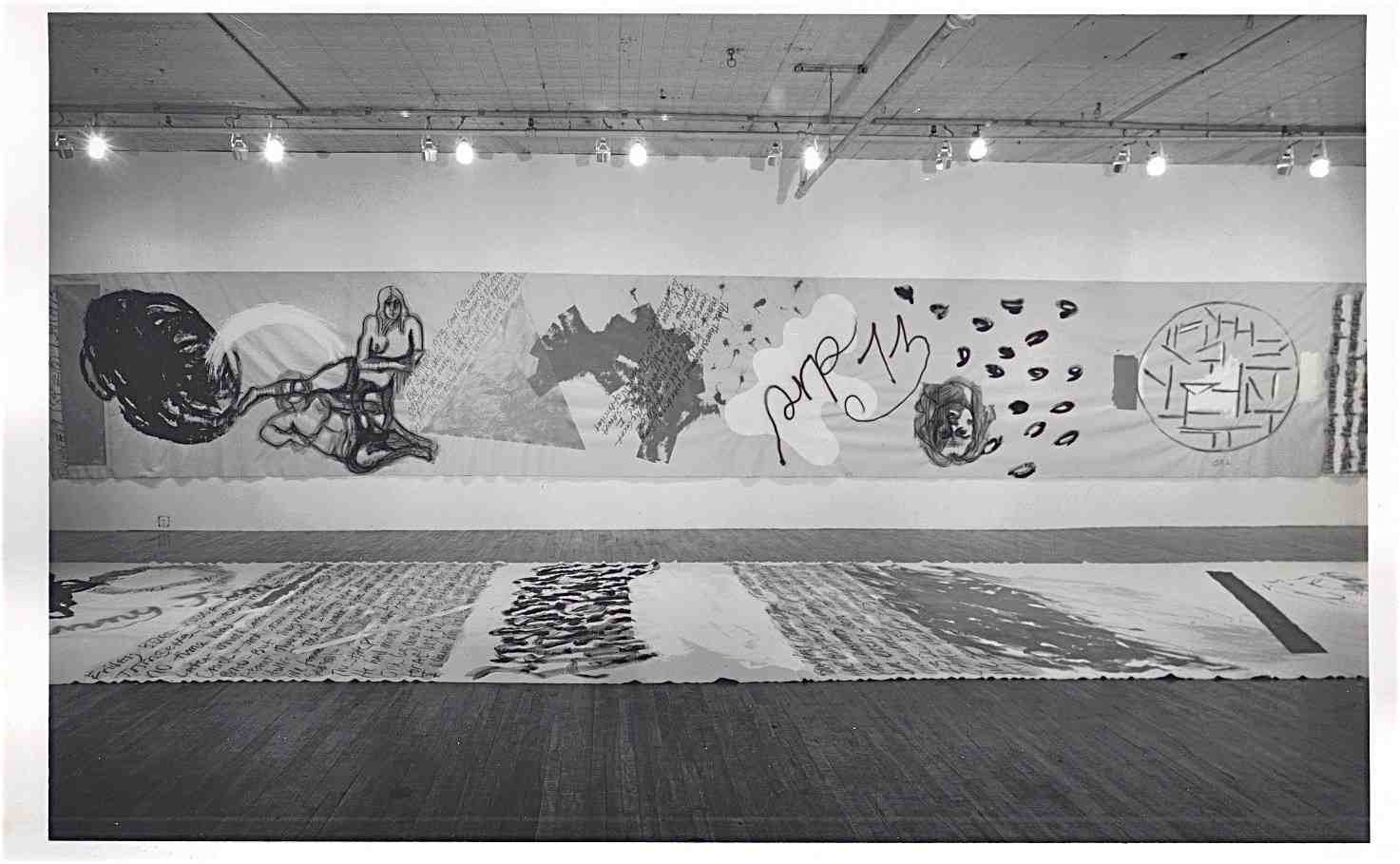 Robert Huot "Diary Paintings 1971-73", Paula Cooper Gallery, Jan. 14-17, 1973. Photo R.E. Mates & P. Katz 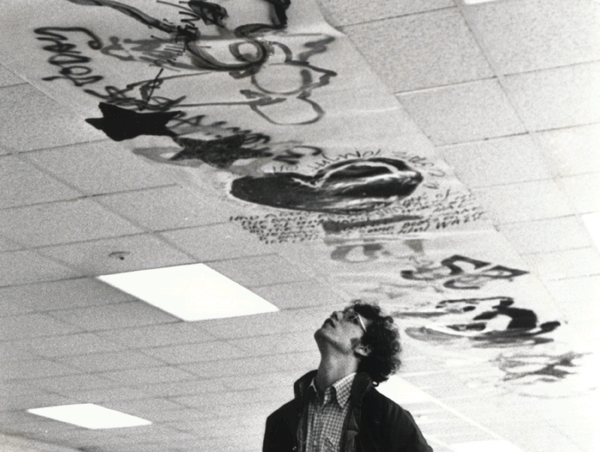 Robert Huot "Diary Painting #48", Feb/Mar 1975, Utica College, Utica, NY (1979) 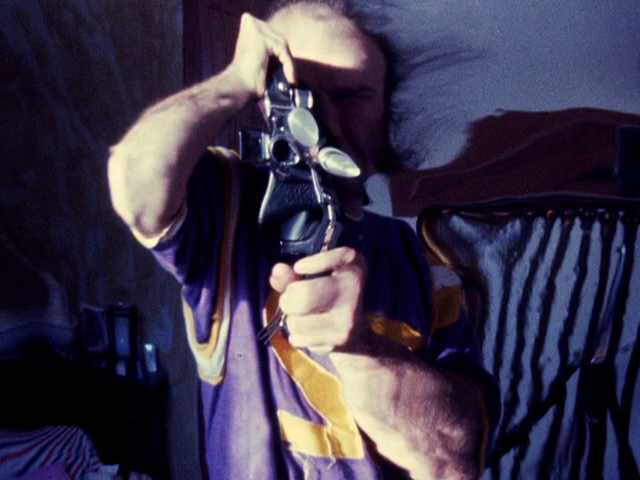 Robert Huot, still from "Diary Film 1974-75" 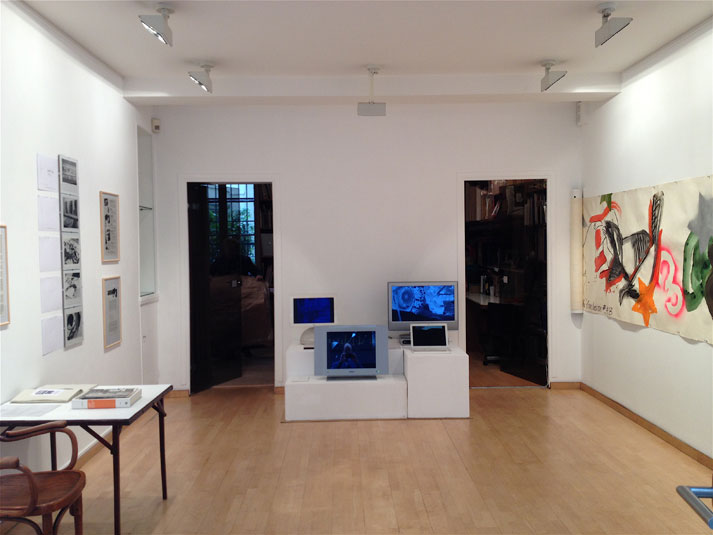 ROBERT HUOT "Diaries" View of the show 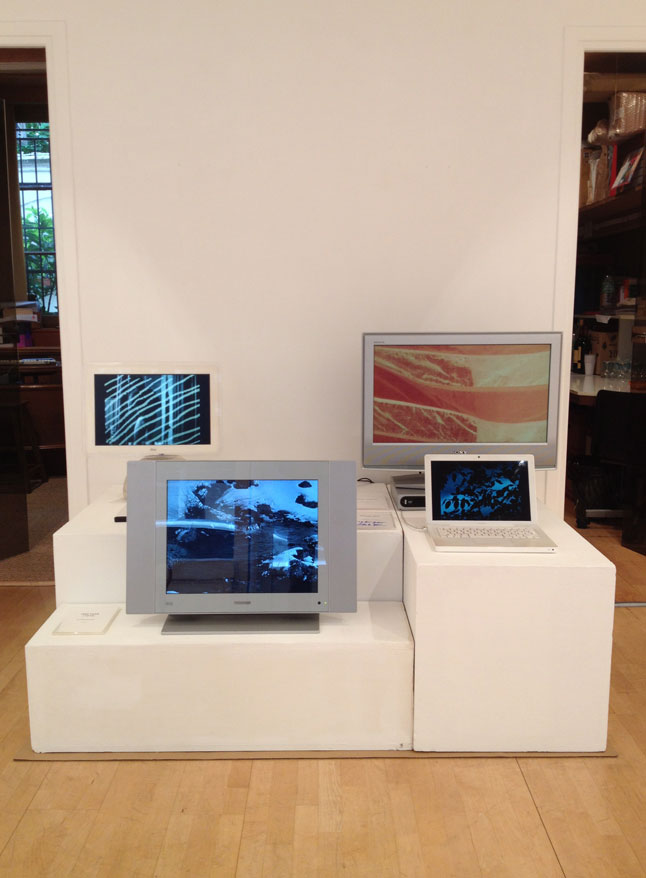 ROBERT HUOT 4 Diary films : "THIRD 1 YEAR MOVIE", 1972-73, DVD transfer of 16 mm Color I/N, Reels 1 & 2, 58:40 min. "DIARY 1974-75", DVD, 68 min. "ONE YEAR (1970)", DVD, 38 min. "ROLLS: 1971" (1971-72), DVD, 96 min.  ROBERT HUOT "DIARY PAINTING #48", Feb/March 1975, 106,5 x 2000 (env.) cm, technique mixte sur papier 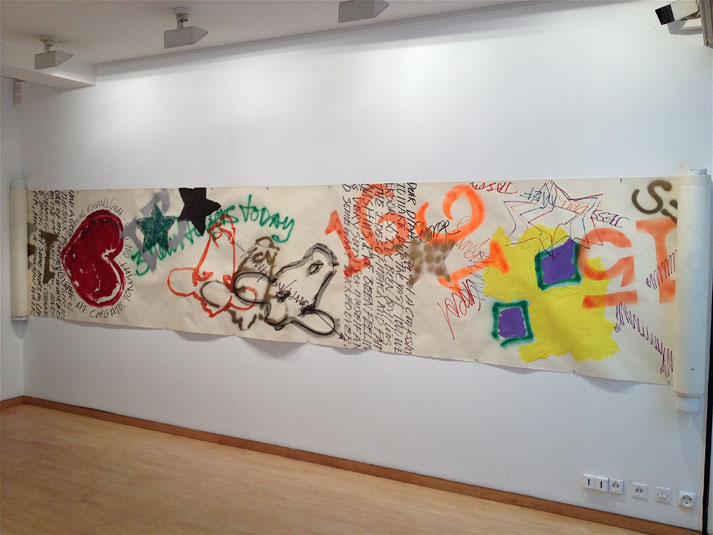 Robert Huot "Diary Painting #48" part 2 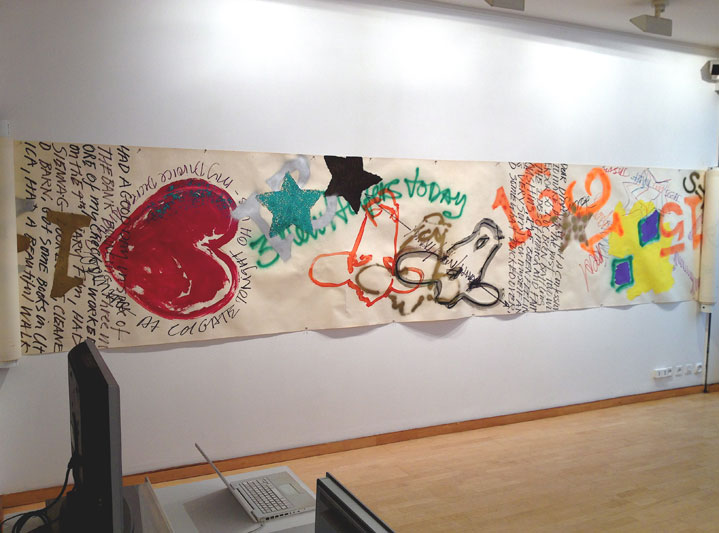 Robert Huot "Diary Painting #48" part 2 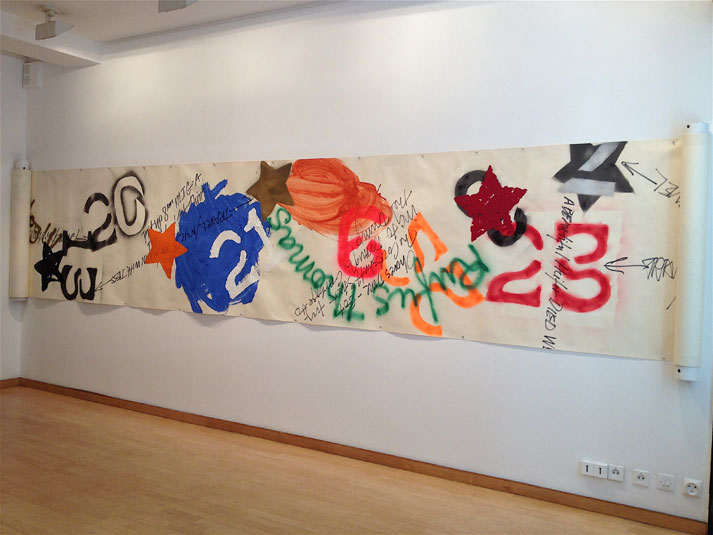 Robert Huot "Diary Painting #48" part 3 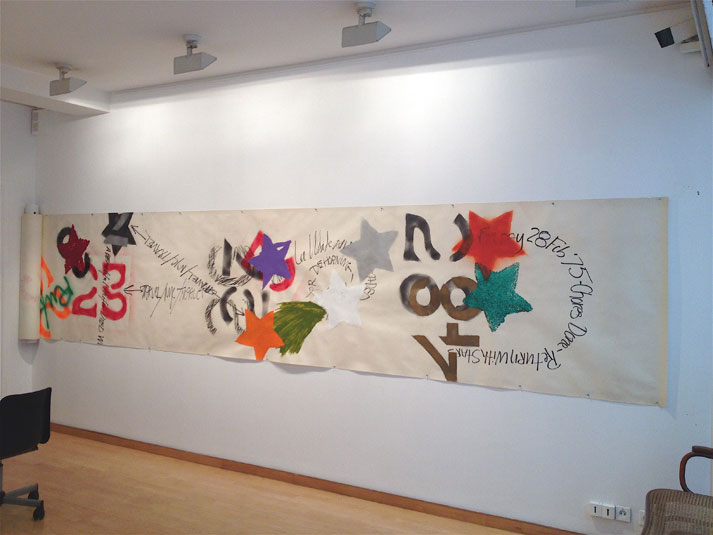 Robert Huot "Diary Painting #48" part 4 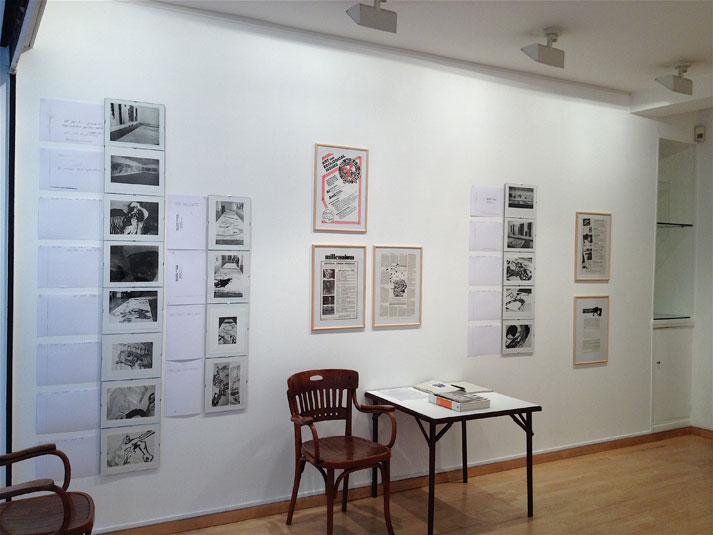 ROBERT HUOT 17 photos de Diaries: 6 photos exposition “Robert Huot Diary Paintings 1971-73”, Paula Cooper Galllery, Jan. 14-17, 1973, (4 photos Robert E. Mates & Paul Katz, 2 photos Marion Faller) 1 photo d’exposition “Robert Huot Diary Paintings”, University Art Gallery, SUNY, Albany, NY, Jan 19-Feb 15, 1976, (photo R. Huot) 1 photo “Diary” (photo Marion Faller) 6 photos “Diary Detail” (photos R. Huot) 1 photo “Studio” (photo R. Huot) 2 photos “Dairy Film 1974-1975” Mylar Reflexion and negative self portrait (photos R. Huot) 20,2 x 25,3 cm chaque  ROBERT HUOT 6 posters: The Evening News, The Chameleons 1981, 28 x 43 cm Art and Ecological Issues, Hunter Gallery & 22 Wooster Street Gallery, 1981, 43 x 28 cm Millenium, Spring Series 1982, 43 x 28 cm Pasadena Film Forum, Program Notes, Jan. 31, 1983, 35 x 21,5 cm Pasadena Film Forum, The Bank Playhouse (1983?), 43 x 28 cm Film Gallery, Rising Sun Media Art Center, Winter ’83, 43 x 28 cm 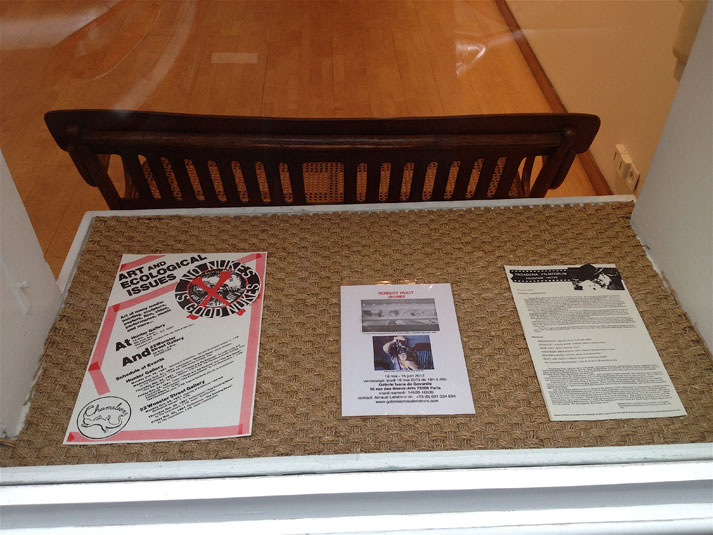 ROBERT HUOT Posters 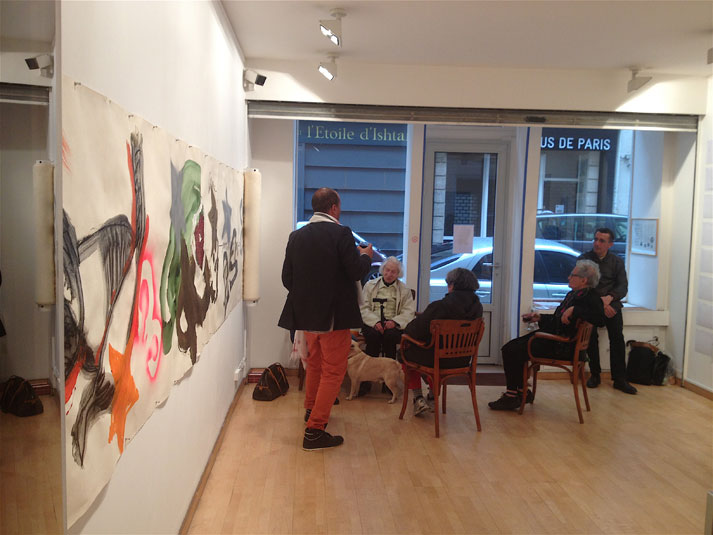 ROBERT HUOT "Diaries" exhibition 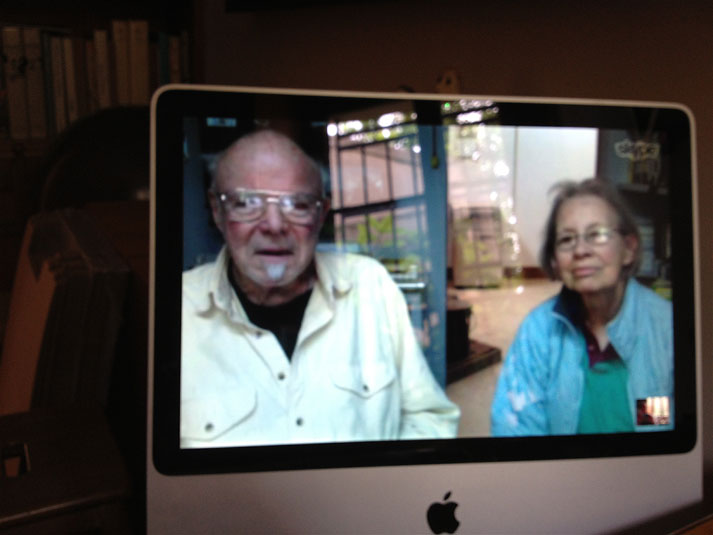 Bob Huot & Carol Kinne on "Skype" |